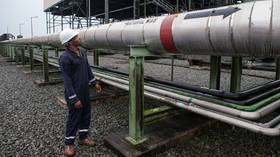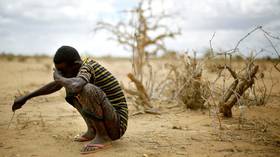Can Africa seize control of its own energy?
The continent has taken a decisive step towards resource sovereignty, but the real struggle lies ahead
At an extraordinary meeting of the Council of Ministers of the African Petroleum Producers Organization (APPO) in early July, it was decided that the headquarters of the new Africa Energy Bank will be located in Nigeria, over Algeria, Benin, and Ghana. For Nigeria, it was particularly important to beat Algeria, a rival for the status of Africa’s largest energy power, and Ghana – a rival for political influence in West Africa.
Between Nigeria and Algeria, the choice probably fell on the former because, in January, the Research Institute (GRI) of the Gas Exporting Countries Forum (GECF) was opened in Algeria. The GRI will develop a framework for scientific and technological cooperation through information exchange, the sharing of best practices, innovation, and technology transfer. Moreover, the African Energy Commission (AFREC) of the African Union is also located in Algeria. The presence of such international organizations has already sealed Algeria’s status as an influential player in the energy sector, both in Africa and globally.
The fact that the headquarters of the Africa Energy Bank (AEB) – which may become one of Africa’s most influential financial structures, both in the energy sector and in general – will be located in Nigeria is an important achievement for the country, especially in light of the crises which have impacted the country’s energy sector.
The founding documents and the AEB charter were signed in early June by Afreximbank and the Africa Petroleum Producers’ Organization (APPO). The latter is an African organization established in 1987 to develop intra-African cooperation in the energy sector. The same two organizations spearheaded the project to establish the AEB, became its founders, and will provide a large portion of the initial capital.
It is assumed that the bank’s capital will initially amount to $5 billion. $1.5 billion will be provided by Afreximbank and APPO, another $1.5 billion will be contributed by the bank’s member countries (the minimum contribution will be $83 million, so the founders count on about 15-17 countries joining the bank initially), and another $2 billion will be provided by external investors. There is no definite information yet as to which countries will join the membership circle, but Nigeria and Ghana have already contributed funds and, in addition to Algeria, Benin, and Nigeria, countries like Angola, Egypt, Cote d’Ivoire, Libya, South Africa, and others are interested in becoming members.
To this day, in terms of energy issues, most African countries remain critically dependent on non-regional players. The main mineral deposits, transport and logistics facilities, energy and port infrastructure remain under the control of Western and Asian companies (eg, China, Japan, South Korea, the United Arab Emirates).
Non-African think tanks (primarily Western ones), international development aid agencies, and even corporations help develop the regulatory framework and assist with the strategic development of entire industries in Africa, forming an environment that corresponds to their own interests. Many of the current standards, technical regulations, regulatory legal acts, and charters have been in place since colonial times and resemble those of the former metropoles. All this gives Western companies preferential market access. Such systemic influence allows non-regional players to maintain their positions even despite the political conjuncture (such as coups d’etat, radical changes in foreign policy, etc). One of the most obvious ways to reduce and overcome Africa’s dependence on external forces is to develop intra-African cooperation and diversify contacts with non-regional players.
AEB’s main task is in line with this logic – when it comes to energy projects, it aims to solve the problem of underfunding or, rather, the dependence on external financing and, accordingly, an externally imposed energy and climate agenda.
With each year it becomes increasingly difficult for African governments to implement sovereign strategies for the development of the fuel and energy sector with the funds of non-regional players. For the most part, external creditors have already refused to fund coal generation, and the refusal to finance heavy-fuel oil (HFO) thermal power plants is being increasingly discussed. Many projects in Africa are blocked by the protests of Western eco-activists (who exert pressure on Western creditors); the projects that do receive financing are export-oriented and do not contribute to the development of domestic markets.
Instead, Western lenders increasingly support renewable energy projects. There is nothing wrong with this, and in Africa there are plenty of examples when a pair of wind turbines or a small solar power plant solved the problem with electricity at the local level – for example, in one or two villages. However, wind turbines and solar panels alone cannot provide uninterrupted power supply to a metallurgical plant, a large flour mill, or a modern megalopolis due to their small installed capacity and dependence on weather conditions. The West’s selective financing prevents industrialization and consequently, import substitution and localization initiatives, forcing Africa to remain import-dependent and use up its already scarce foreign exchange reserves.
The establishment of the AEB is an important victory for Africa and an attempt to strengthen energy sovereignty, but the main work lies ahead and finding money is the main problem. First of all, $5 billion in initial capital isn’t enough to solve the problem of energy poverty in Africa, where 600 million people still do not have access to mains electricity and rely on diesel generators. On average, one 200-300-megawatt power plant costs about $200 million (meanwhile, the energy shortage in Africa amounts to hundreds of gigawatts), the construction of one main gas pipeline costs $2-3 billion, a nuclear power plant costs at least $15 billion, and the development of one oil and gas field amounts to over $1 billion.
Secondly, the $2 billion (or 40% of the capital) that the bank plans to obtain from external investors is a ‘black box’ and potentially the project’s biggest risk. The experience of other pan-African financial institutions (such as the African Development Bank) shows that the shareholders are likely to be Western countries and Bretton Woods institutions (the IMF and the World Bank) that will form alliances, and as a result, their voice may become decisive at shareholder meetings, so they will get the opportunity to determine the bank’s policy.
Thirdly, the bank’s primary currency will be the dollar and the euro, which means it is at risk of sanctions and other restrictions. And finally, the main players in the African energy sector (with only a few exceptions) are Western and Chinese companies. They invest in projects and manage them, and supply the necessary equipment and technologies, which means that any project will still depend on the position of non-regional players.
All these risks are surmountable and, through further work, additional capitalization, and greater sovereignty, the bank will be able to achieve its ambitious goals.
The establishment of the AEB indicates an important trend: African countries want to independently determine the development of their energy markets and move away from external dictatorship. The establishment of an independent infrastructure is a key step in this direction, but it must be complemented by other measures, including: developing an adequate energy strategy (at all levels, from the local to the continental); establishing project-evaluation criteria (in terms of the contribution to the energy sovereignty of Africa and not the export of energy resources from Africa); developing regulatory, technical, and environmental supervision tools; strengthening the legislative framework; and supporting African energy companies and knowledge-sharing programs.








Comments are closed.